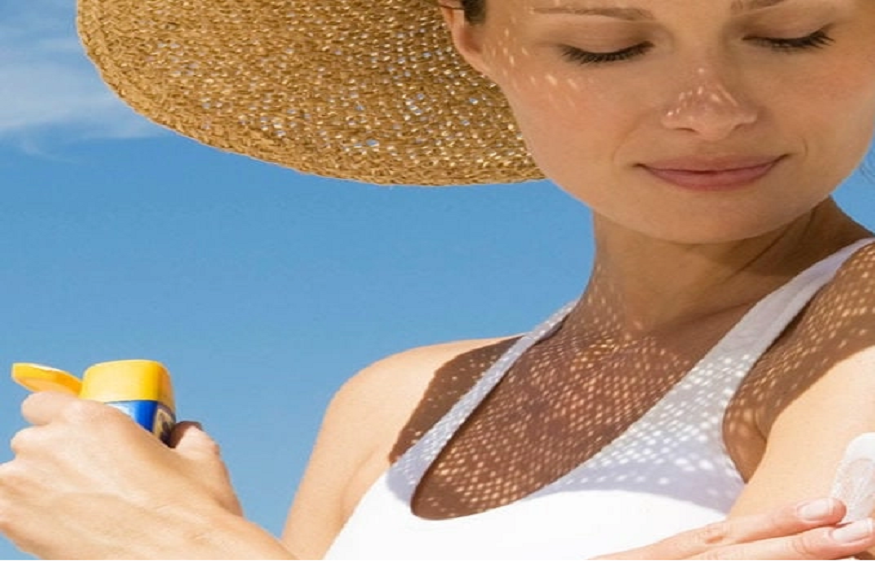
What are the effects of ultraviolet rays on the skin?
Ultraviolet radiation can be emitted by natural sources such as the sun, or man-made such as tanning lamps. Responsible for tanning and sunburn, UVB rays penetrate the skin by stopping at the level of the upper layers, the epidermis. UVA rays , on the other hand, penetrate to the dermis, directly pigmenting and altering the skin in a deep and irreversible way.
Whether UVA or UVB, both cause a destructive action in the skin by inducing cell damage responsible for premature aging and skin cancer . But the skin is not the only one concerned since the production of free radicals hindering the immune response, the immune system can also be affected.
For the eyes, the sun can also cause photo-keratitis , a cataract phenomenon and serious damage to the retina (a phenomenon that is even more accentuated in the mountains with snow and altitude). On dark skin, even if the number of skin cancers is lower, the immune and ocular effects are identical.
So, whether you’re in your garden, on the terrace of a café, at the beach, in the mountains or in the countryside, when you play sports outdoors or simply when you take a walk… protect yourself, so that the sun remains a pleasure.
How to choose the right sunscreen?
The first rule is to choose a product adapted to your skin type , but also to the conditions of exposure , that is to say the duration and the power of the solar radiation .
Asun protection productis a cosmetic preparation that contains so-called photo-protective filters of two types: chemical filters that absorb UV rays and mineral screens that reflect UV rays. For children, thepregnant womenand reactive skin, it will be preferable to favor mineral filters (Biarritz Laboratories,Avene,La Roche Posay, among others), because chemical filters can induce more allergic reactions in sensitive areas.
A sunscreen product must protect against both UVB and UVA and meet a number of standards :
– UVB protection is defined by a Sun Protection Factor (FPS or SPF: Sun Protection Factor, in English) at least equal to 6. A protective screen of 6 is the mandatory minimum. Note that there are 8 indices grouped within 4 levels of protection : 6 to 10 is equivalent to low protection, 15 to 25 to medium protection, 30 to 50 to high protection and 50+ to very high protection.
UVA protection must be at least equivalent to 1/3 of the SPF.
1. Avène Sun Spray SPF50+ 200ml
2. Avène Solar Mineral Milk SPF50+ 100ml
3. Bioderma Photoderm Sun Mist SPF50+ 150m
Which sunscreen to choose for the face?
Good news ! Whether you have dry or oily skin, dark spots or acne, know that there are sun protection creams adapted to your skin type.
– For oily or acne-prone skin , opt for a light, fluid and mattifying cream with the SPF50 index. Contrary to what one might think, sun and acne do not mix. Although the sun dries up pimples at first, the rebound effect on acne breakouts is catastrophic.
– For skin prone to hyperpigmentation , choose an anti-spot sunscreen, which effectively protects existing brown spots from the sun’s rays and above all prevents the appearance of new ones.
– For dry skin , prefer moisturizing formulas by choosing a more nourishing cream suitable for the fine and sensitive skin of the face.
How to properly use sun protection products?
The sunscreen must be applied before exposure evenly on all uncovered and/or exposed surfaces, without forgetting the hands, ears, temples and tops of the feet. It is recommended for an adult of average build to apply at least 36 grams of cream , equivalent to 6 teaspoons for the whole body . The application of sunscreen product must be renewed every 2 hours and/or after bathing, wiping or sweating.
In addition to the proper use of sunscreen, a few preventive actions can provide effective protection against sun risks.
– Protect yourself as soon as the UV index is greater than 3 , indicated on all weather applications or during television weather reports.
– Do not expose yourself between 12 p.m. and 4 p.m. and take as much shelter as possible from the sun: the toast attitude is too dangerous!
– Wear the most covering clothes possible , a wide-brimmed hat, sunglasses with an enveloping frame. These glasses must be CE marked and 100% UV.
– Never expose a child under the age of 2 to the sun . Even in the shade, it is imperative to always apply a very high protection sunscreen, with an SPF 50+ Child index .
– Use sun protection adapted to your phototype .
Finally, be aware that no sunscreen product can offer a guarantee of full protection and that taking certain medications, known as photo-sensitizers, requires enhanced sun protection under penalty of exposing yourself to the risk of allergies or severe burns.

